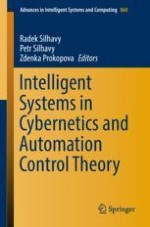2019 | Book
Intelligent Systems in Cybernetics and Automation Control Theory
Editors: Prof. Radek Silhavy, Prof. Petr Silhavy, Prof. Zdenka Prokopova
Publisher: Springer International Publishing
Book Series : Advances in Intelligent Systems and Computing
